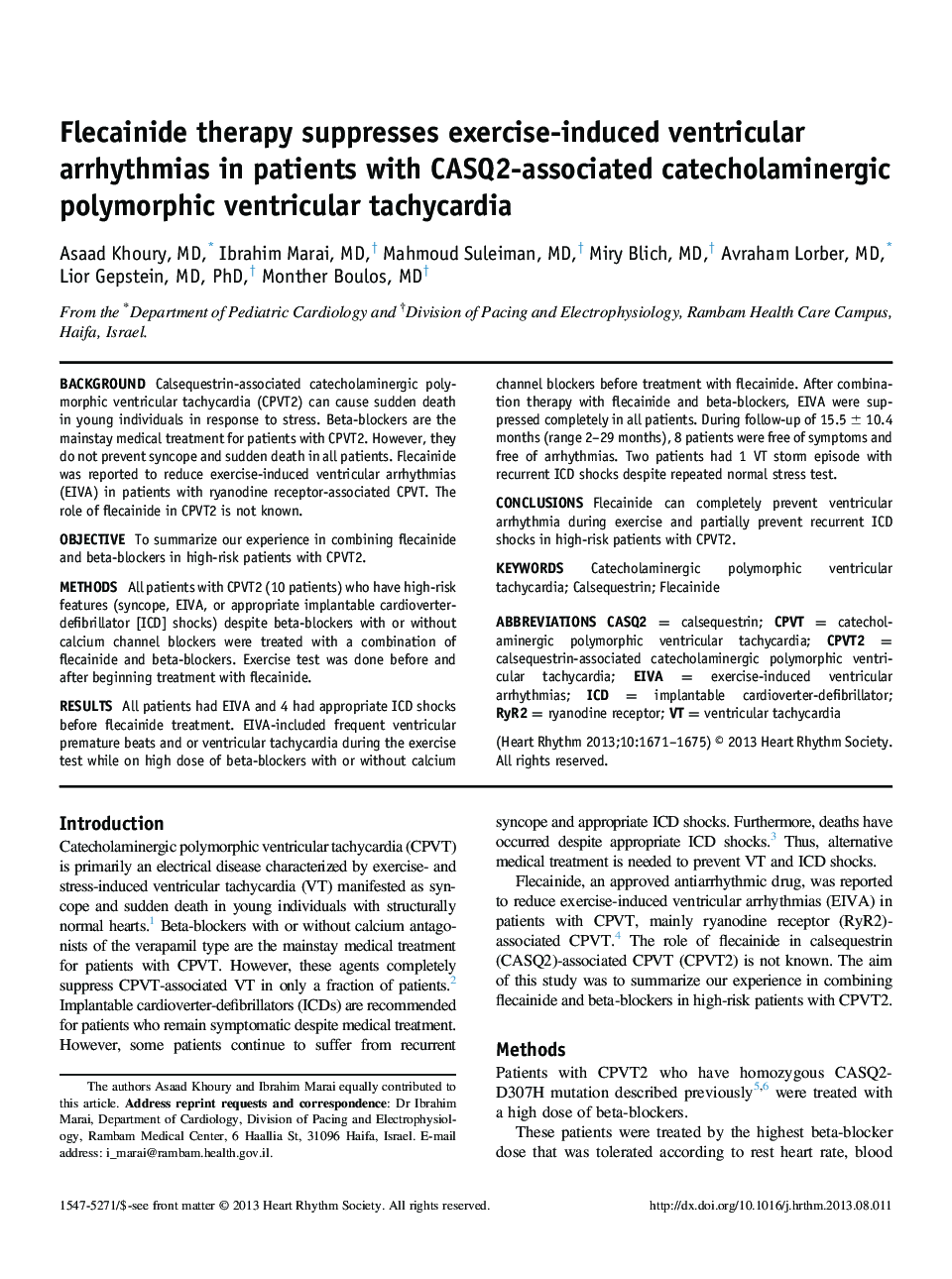| Article ID | Journal | Published Year | Pages | File Type |
|---|---|---|---|---|
| 2922110 | Heart Rhythm | 2013 | 5 Pages |
BackgroundCalsequestrin-associated catecholaminergic polymorphic ventricular tachycardia (CPVT2) can cause sudden death in young individuals in response to stress. Beta-blockers are the mainstay medical treatment for patients with CPVT2. However, they do not prevent syncope and sudden death in all patients. Flecainide was reported to reduce exercise-induced ventricular arrhythmias (EIVA) in patients with ryanodine receptor-associated CPVT. The role of flecainide in CPVT2 is not known.ObjectiveTo summarize our experience in combining flecainide and beta-blockers in high-risk patients with CPVT2.MethodsAll patients with CPVT2 (10 patients) who have high-risk features (syncope, EIVA, or appropriate implantable cardioverter-defibrillator [ICD] shocks) despite beta-blockers with or without calcium channel blockers were treated with a combination of flecainide and beta-blockers. Exercise test was done before and after beginning treatment with flecainide.ResultsAll patients had EIVA and 4 had appropriate ICD shocks before flecainide treatment. EIVA-included frequent ventricular premature beats and or ventricular tachycardia during the exercise test while on high dose of beta-blockers with or without calcium channel blockers before treatment with flecainide. After combination therapy with flecainide and beta-blockers, EIVA were suppressed completely in all patients. During follow-up of 15.5 ± 10.4 months (range 2–29 months), 8 patients were free of symptoms and free of arrhythmias. Two patients had 1 VT storm episode with recurrent ICD shocks despite repeated normal stress test.ConclusionsFlecainide can completely prevent ventricular arrhythmia during exercise and partially prevent recurrent ICD shocks in high-risk patients with CPVT2.
